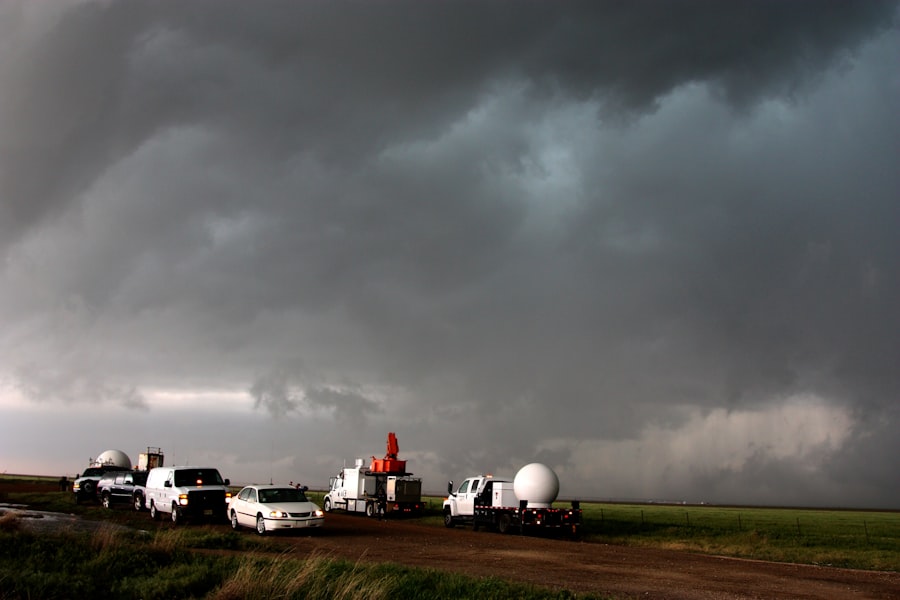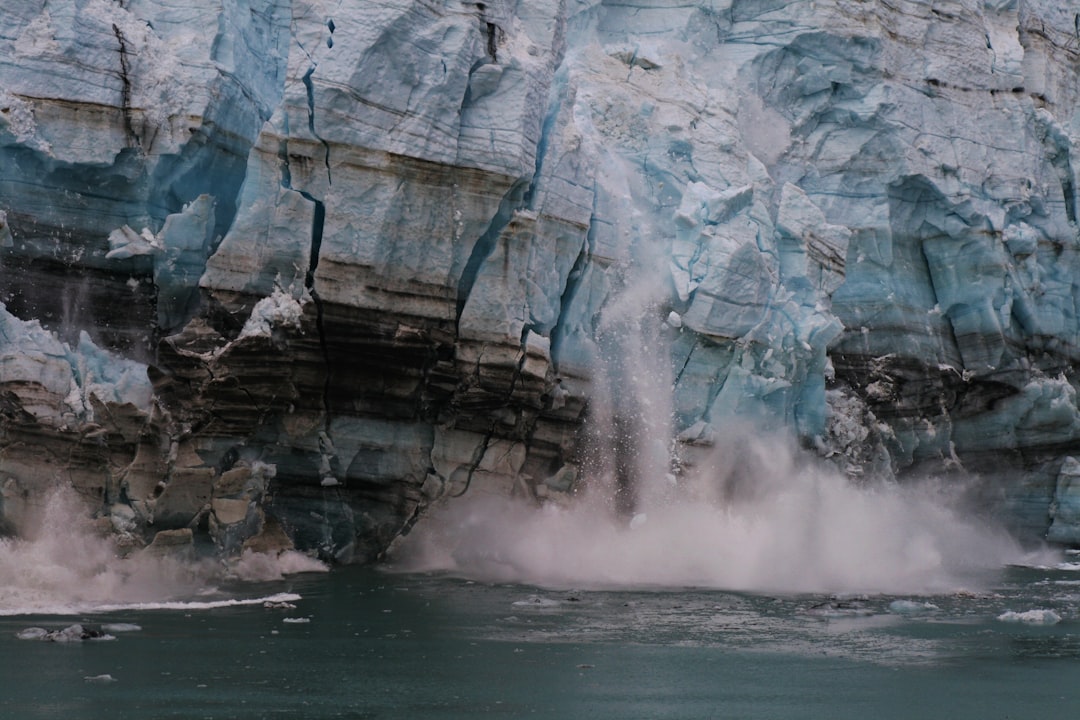The Drake Passage, a body of water located between the southern tip of South America and Antarctica, is renowned for its tumultuous seas and unpredictable weather patterns. Named after the English explorer Sir Francis Drake, who navigated these waters in the late 16th century, the passage serves as a critical maritime route for vessels traveling to and from Antarctica. Stretching approximately 800 kilometers (500 miles) wide, it is often regarded as one of the most challenging maritime passages in the world.
The confluence of the Atlantic and Pacific Oceans creates a unique environment that is both awe-inspiring and perilous, making it a focal point for adventurers, researchers, and maritime professionals alike. The significance of the Drake Passage extends beyond its geographical location; it plays a vital role in global oceanic circulation and climate patterns. The currents that flow through this passage are instrumental in regulating temperatures and influencing weather systems across the Southern Hemisphere.
As such, understanding the dynamics of the Drake Passage is essential not only for those who navigate its waters but also for scientists studying climate change and marine ecosystems. The passage’s reputation for rough seas and sudden storms has made it a subject of fascination and trepidation, drawing attention from sailors and researchers who seek to unravel its mysteries.
Key Takeaways
- The Drake Passage is a treacherous body of water located between the southern tip of South America and the northern tip of Antarctica.
- The climate of the Drake Passage is characterized by strong winds, high waves, and rapidly changing weather conditions, making it one of the most challenging maritime environments in the world.
- Navigating the Drake Passage poses significant challenges for ships and requires experienced crew and captains who are familiar with the unpredictable weather patterns and navigational hazards.
- Unpredictable weather in the Drake Passage can impact travel schedules, causing delays and disruptions for ships and passengers.
- Safety precautions for navigating the Drake Passage include having an experienced crew and captain, utilizing advanced technology and equipment, and implementing emergency response plans for unforeseen weather events.
Understanding the Climate of the Drake Passage
The climate of the Drake Passage is characterized by its extreme variability, which can change rapidly within a matter of hours. This region experiences strong winds, heavy precipitation, and significant wave heights, making it notorious among mariners. The prevailing westerly winds, known as the Roaring Forties, contribute to the passage’s rough conditions, as they generate powerful swells that can reach heights of over 10 meters (33 feet).
These winds are particularly fierce during the winter months when storms are more frequent and intense, creating a challenging environment for vessels attempting to navigate through. Temperature fluctuations also play a crucial role in shaping the climate of the Drake Passage. The waters are influenced by cold Antarctic currents as well as warmer currents from the north, leading to a complex interplay of temperatures that can affect weather patterns.
Fog is common in this region, often reducing visibility and complicating navigation. Additionally, the presence of icebergs and sea ice during certain times of the year adds another layer of complexity to the already challenging conditions. Mariners must remain vigilant and adaptable to these ever-changing climatic conditions to ensure safe passage through this formidable stretch of water.
Navigational Challenges in the Drake Passage

Navigating the Drake Passage presents numerous challenges that require skill, experience, and a deep understanding of maritime navigation.
This volatility necessitates constant vigilance from crew members who must be prepared to adjust their course or alter their sailing strategy at a moment’s notice.
The combination of strong currents, high winds, and large waves can create hazardous conditions that test even the most seasoned sailors. In addition to weather-related challenges, the geography of the Drake Passage itself poses navigational hurdles. The presence of submerged rocks and shifting sandbanks can create dangerous situations for vessels that are not equipped with accurate navigational tools.
Furthermore, the proximity to icebergs and pack ice during certain seasons requires mariners to maintain a safe distance while still making progress toward their destination. The need for precise navigation becomes paramount in this environment, where even minor miscalculations can lead to catastrophic consequences.
Impact of Unpredictable Weather on Travel
| Weather Condition | Impact on Travel |
|---|---|
| Heavy Rain | Increased risk of accidents and road closures |
| Snowstorm | Flight cancellations and delays, road blockages |
| High Winds | Flight cancellations, road restrictions for high-profile vehicles |
| Fog | Reduced visibility, flight delays and cancellations |
The unpredictable weather patterns in the Drake Passage have significant implications for travel and transportation in this region. For cruise ships and research vessels alike, sudden storms can lead to delays or even cancellations of planned itineraries. Passengers may find themselves stranded or rerouted due to adverse conditions, which can disrupt travel plans and create logistical challenges for operators.
The impact on tourism is particularly pronounced during peak seasons when travelers flock to Antarctica for its breathtaking landscapes and unique wildlife. Moreover, unpredictable weather can also affect supply routes for research stations and scientific expeditions operating in Antarctica. Delays in transportation can hinder essential supplies from reaching remote locations, impacting ongoing research projects and the well-being of personnel stationed there.
As such, understanding and anticipating weather patterns in the Drake Passage is crucial for ensuring safe travel and maintaining operational efficiency in this remote part of the world.
Safety Precautions for Navigating the Drake Passage
Given the inherent risks associated with navigating the Drake Passage, implementing safety precautions is essential for ensuring the well-being of crew members and passengers alike. One fundamental safety measure involves thorough pre-voyage planning that includes detailed weather assessments and route evaluations. Mariners must stay informed about current weather forecasts and potential storm systems that could impact their journey.
This proactive approach allows crews to make informed decisions about when to set sail or whether to alter their course. Additionally, vessels navigating the Drake Passage should be equipped with advanced safety equipment designed to withstand harsh conditions. Life rafts, emergency beacons, and communication devices are critical components that enhance safety during voyages.
Crew training is equally important; regular drills and simulations help prepare personnel for emergency situations that may arise due to sudden weather changes or navigational challenges. By prioritizing safety measures, mariners can mitigate risks and enhance their chances of successfully navigating this treacherous passage.
Importance of Experienced Crew and Captain

The role of an experienced crew and captain cannot be overstated when it comes to navigating the Drake Passage. A skilled captain possesses not only technical knowledge but also an intuitive understanding of maritime conditions that can only be gained through years of experience at sea. Their ability to read weather patterns, assess risks, and make quick decisions is vital for ensuring safe passage through this challenging environment.
An experienced captain can effectively communicate with their crew, fostering a collaborative atmosphere that enhances overall safety.
Each member must be well-trained in their specific duties while also being prepared to assist in emergency situations.
Teamwork is essential; crew members must work together seamlessly to respond to changing conditions or unforeseen challenges that may arise during their journey. The combination of an experienced captain and a well-trained crew creates a formidable team capable of navigating even the most treacherous waters with confidence.
Technology and Equipment for Navigating Unpredictable Weather
Advancements in technology have significantly improved navigation capabilities in challenging environments like the Drake Passage. Modern vessels are equipped with sophisticated navigation systems that utilize GPS technology, radar, and sonar to provide real-time data on weather conditions and potential hazards. These tools enable mariners to make informed decisions about their routes while enhancing situational awareness during their journeys.
In addition to navigation systems, weather forecasting technology has also evolved dramatically over recent years. Satellite imagery and predictive modeling allow crews to anticipate weather changes with greater accuracy than ever before. This information is invaluable for planning safe passages through unpredictable conditions.
Furthermore, communication technology enables vessels to stay connected with shore-based support teams who can provide additional insights or assistance as needed. By leveraging these technological advancements, mariners can navigate the Drake Passage more effectively while minimizing risks associated with unpredictable weather.
Strategies for Minimizing the Impact of Unpredictable Climate
To navigate the challenges posed by unpredictable climate conditions in the Drake Passage, mariners employ various strategies aimed at minimizing risks while maximizing safety. One effective approach involves flexible scheduling that allows for adjustments based on real-time weather assessments. By remaining adaptable and open to changing plans, crews can avoid dangerous conditions while still making progress toward their destination.
Another strategy involves thorough training programs focused on emergency preparedness and response protocols. Crew members should be well-versed in procedures for handling adverse weather situations, including how to secure cargo, manage vessel stability, and communicate effectively during emergencies. Regular drills help reinforce these skills while fostering a culture of safety aboard vessels operating in this challenging environment.
By prioritizing preparedness and adaptability, mariners can better navigate the uncertainties associated with climate variability in the Drake Passage.
Emergency Response Plans for Unforeseen Weather Events
Despite careful planning and preparation, unforeseen weather events can still occur while navigating the Drake Passage. As such, having robust emergency response plans in place is crucial for ensuring crew safety and minimizing potential damage to vessels. These plans should outline specific protocols for various scenarios, including severe storms, equipment failures, or medical emergencies.
Training exercises should be conducted regularly to familiarize crew members with emergency procedures and ensure they are prepared to act swiftly when needed. Clear communication channels must also be established so that all personnel understand their roles during an emergency situation. By developing comprehensive emergency response plans tailored to the unique challenges posed by the Drake Passage, mariners can enhance their resilience against unforeseen weather events while safeguarding lives and property.
Environmental Considerations in Navigating the Drake Passage
Navigating the Drake Passage also entails a responsibility toward environmental stewardship. The waters surrounding this region are home to diverse marine ecosystems that play a vital role in global biodiversity. As such, mariners must be mindful of their impact on these fragile environments while conducting their operations.
Efforts should be made to minimize pollution from vessels by adhering to strict waste management protocols and utilizing eco-friendly technologies whenever possible. Additionally, crews should remain vigilant about protecting wildlife habitats during their journeys through the passage. By prioritizing environmental considerations alongside navigational safety measures, mariners can contribute positively to preserving the unique ecosystems found within this remarkable region.
Navigating the Drake Passage with Resilience and Preparedness
Navigating the Drake Passage is undoubtedly a formidable challenge that requires resilience, preparedness, and a deep understanding of maritime dynamics. The unpredictable climate, coupled with navigational obstacles and potential hazards, demands that mariners remain vigilant at all times. However, with advancements in technology, experienced crews, and comprehensive safety measures in place, it is possible to traverse this treacherous passage successfully.
Ultimately, successful navigation through the Drake Passage hinges on a combination of knowledge, skill, teamwork, and respect for both nature’s power and its beauty. By embracing these principles while remaining adaptable to changing conditions, mariners can not only conquer one of the world’s most challenging waterways but also foster a greater appreciation for its significance within our planet’s intricate ecological tapestry.
The Drake Passage, a crucial waterway connecting the Atlantic and Pacific Oceans, plays a significant role in global climate patterns. Recent studies have highlighted how changes in this region can impact ocean currents and, consequently, climate systems worldwide. For more detailed insights into the climatic implications of the Drake Passage, you can explore a related article on MyGeoQuest, which delves into the intricate dynamics of this vital maritime corridor.
WATCH NOW! Drake Passage: Earth’s Deadliest Waters Revealed
FAQs
What is the Drake Passage?
The Drake Passage is the body of water between the southern tip of South America and the northern tip of the Antarctic Peninsula. It is known for its rough seas and strong winds, making it a challenging area for navigation.
What is the climate like in the Drake Passage?
The climate in the Drake Passage is characterized by strong westerly winds, high waves, and cold temperatures. The area experiences frequent storms and low temperatures, with the average temperature ranging from 2°C to 7°C.
How does the climate in the Drake Passage affect the surrounding regions?
The climate in the Drake Passage has a significant impact on the surrounding regions, particularly Antarctica and South America. The strong winds and cold temperatures influence the weather patterns and ocean currents in these areas, affecting local ecosystems and wildlife.
Why is the climate in the Drake Passage important?
The climate in the Drake Passage plays a crucial role in global ocean circulation and climate systems. It is a key area for the exchange of water, heat, and nutrients between the Atlantic, Pacific, and Southern Oceans, which has implications for global climate patterns.
